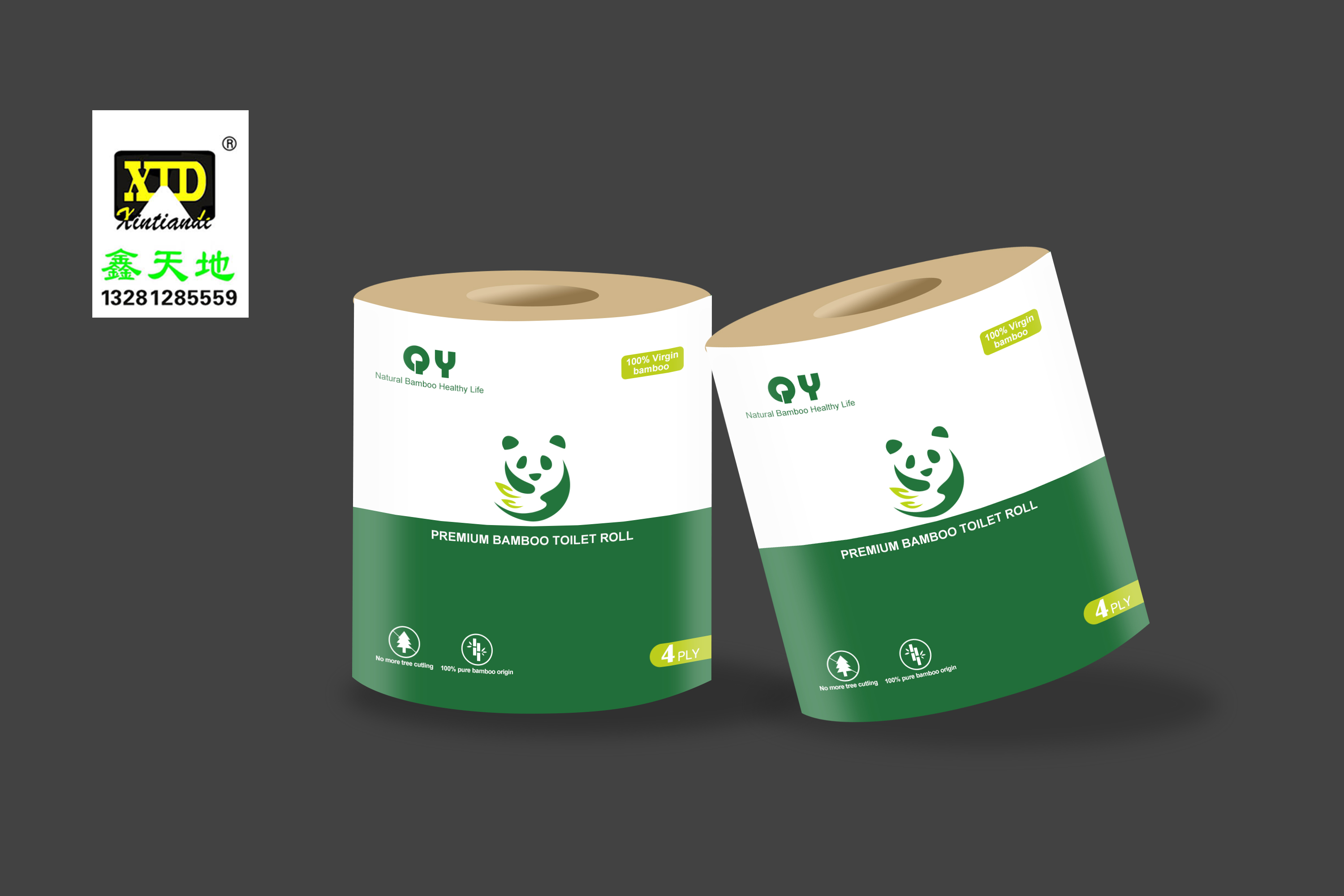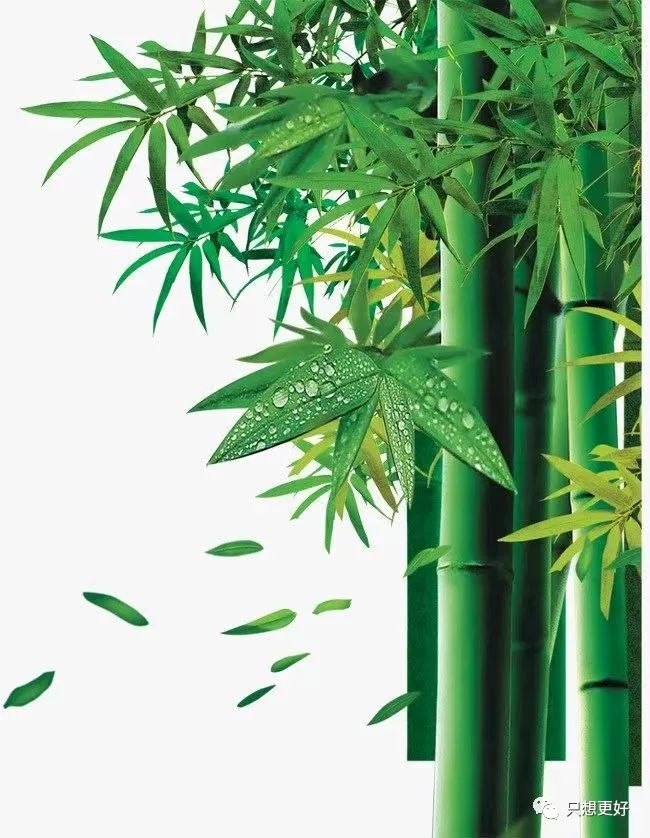Bamboo, Latin scientific name · Bambusoideae (Bambusaceae or Bamboo), grass undergraduate bamboo subfamily plant: plant phyla: angiosperms phyla: monocot order: grain, family: Poaceae
Bamboo is a perennial herb of grasses, wood, grass, slightly empty in sections and dense, normal 5-10 meters high, some even more than 40 meters; bamboo leaves are narrow lanceolate, dark green; bamboo flowers like rice ears, the main color is yellow; flowering period is generally in May and the fruit period is October. The name of bamboo comes from its ancient character, whose drooping bamboo leaves have evolved into today's Chinese character bamboo.
Bamboo comes from China, rich in tropical, subtropical and temperate regions, Chinese cultivation is widely spread, mainly produced in Sichuan, Chongqing, Zhejiang, Jiangsu and other places, in the world is also distributed in Asia, Africa, North America in some countries. Bamboo likes a warm and humid climate, with high requirements for hydrothermal conditions, like fertile soil, good drainage, rich in organic matter and mineral elements of the more acidic soil.
"Compendium of Materia Medica" recorded bamboo: " light bamboo leaves smell xin flat, big cold, non-toxic."Bamboo indications for upset, red urine, adverse urination and other diseases. Bamboo fiber has good air permeability, water absorption, wear resistance and other characteristics, can be made into a variety of furniture or handicrafts; bamboo shoots, bamboo rice, bamboo whip can be edible or medicine, has a high economic value. Bamboo growth cycle is short, evergreen, can also be used as an urban green plant. Bamboo branches tall and slender, four seasons green, proud snow ling frost, ancient used to describe the integrity, unyielding characters. Bamboo during the growth of not afraid of cold and heat, not afraid of wind, frost and snow, has been widely loved by people.
growing environment
climate
Bamboo mostly like warm and humid climate is rich in tropical, subtropical and temperate areas. Bamboo is one of the forest resources. There are more than 70 genera and 1,200 species of bamboo plants in the world, mainly distributed in tropical and subtropical areas, and a few bamboo species are distributed in temperate and cold zones.
bamboo
Bamboo is an evergreen (a few bamboo species fall leaves in the dry season), which requires high water and thermal conditions and is very sensitive. The hydrothermal distribution on the earth's surface dominates the geographical distribution of bamboo. Southeast Asia is located in the tropics and south Asian tropics, and is influenced by the Pacific and Indian Ocean monsoon, with abundant rainfall and stable heat. It is an ideal ecological environment for bamboo growth and also the center of bamboo distribution in the world.
At present, the world's bamboo forest area is about 22 million hm 2. The geographical distribution of bamboo in the world can be divided into three bamboo areas, namely the Asia-Pacific bamboo region, the American bamboo region and the African bamboo region. Some scholars also list the introduction areas in Europe and North America ".[2] Bamboo grows very quickly after the rain.
soil
Bamboo for soil requirements, deep and fertile soil, rich in organic matter and mineral elements of the more acidic soil. Because the underground stems of tufted and mixed bamboo are relatively shallow, and the bamboo shoot period is in summer and autumn, Hsinchu could not be fully lignified and could not withstand cold and drought, so the growth in the north is generally limited, and their requirements for the soil are higher than those of scattered bamboo.
Shuifen
Bamboo water requirements, both have sufficient water, and good drainage.
Main value
ornamental value
Bamboo growth cycle is short, evergreen, can also be used as an urban green plant.
commercial value
Bamboo fiber has good air permeability, water absorption, wear resistance and other characteristics, can be made into a variety of furniture or handicrafts; bamboo shoots, bamboo rice, bamboo whip can be edible or medicine, has a high economic value.
The use of life
In the courtyard, is an indispensable ornament of rockery water pavilion plants. Phoenix tail bamboo is widely planted by the Lijiang River in Guilin. Anji Great Bamboo Sea, South Sichuan Bamboo Sea and Gannan Bamboo Sea are the famous bamboo sea landscape in China. Due to the fast growth of bamboo, a lot of furniture and paper have been made from bamboo for environmental reasons. Bamboo can also make handicrafts, Musical Instruments, etc. Bamboo fibers made by engineering methods and through physical and chemical processes are used as textiles to make towels and clothes. Bamboo is baked into bamboo charcoal, which is used on many occasions, including the removal of environmental odors, and special flavor foods. Bamboo charcoal after crushing and activation made of activated carbon, has a very good adsorption and purification effect, is used in cars and home furnishing, as well as sewage treatment. Bamboo is also often used in the construction of scaffolding (shed), as building materials and brooms, tables, chairs and other daily necessities. Bamboo can also be compiled baskets, baskets, vegetable baskets, MATS and other general rural more common. Bamboo has been widely used in home textile, socks, underwear and other close textile fields.

The use of life
In Japan and South Korea, some people will use sea salt, loess, etc., similar to steelmaking, processed into bamboo salt (or bamboo salt), as seasoning, even into personal hygiene products, bamboo salt toothpaste is the more well-known product. It is said to have anti-inflammatory anti-bacterial, anti-moth, maintain gum collagen, to prevent gingival degeneration and periodontal disease.
Medical use
"Compendium of Materia Medica" recorded bamboo: " light bamboo leaves smell xin flat, big cold, non-toxic."Bamboo indications for upset, red urine, adverse urination and other diseases.
Bamboo leaves: "Compendium of Materia Medica": " Light bamboo leaves smell spicy, big cold, non-toxic; indications: upset, red urine, adverse urine, etc. Bitter bamboo leaves smell cold and non-toxic; mouth sore, sore, insomnia, stroke, etc. Pharmaceutical bamboo leaves are picked in summer and autumn, dried and fried in water for 2 to 4 yuan ". Bamboo leaves are often used as medicinal porridge. According to the "Lao Lao Heng Yan" compiled by Cao Tingdong in the Qing Dynasty, "Bamboo leaves quench thirst and remove trouble, heatstroke should hold a bamboo leaf, a mountain mast, fry soup to remove rice and cook porridge, and enter one or two cups.""How can I despise. Volume back ":" Bamboo leaf porridge to treat the elderly diaphragm wind heat, eyes red headache, turn a blind eye.”
Bamboo drain: it is to split the bamboo pole and collect the bamboo juice dripping from both ends after burning."Compendium of Materia Medica" records: " Bamboo drain smell sweet, big cold, non-toxic. Atdications: stroke, heat in the chest, stop boredom, thirst, fatigue."Modern medicinal chemical analysis has proved that bamboo li contains more than ten kinds of amino acids, glucose, fructose, sucrose and callus, cresol, formic acid, acetic acid, benzoic acid and other chemical components. Pharmacological tests have proved that bamboo li does have the effect of relieving cough and expectorant.
Bamboo solid: bamboo after flowering strong such as wheat, green skin, containing bamboo rice, sweet taste."Guangzhi" records: "real can take food"."Compendium of Materia Medica": "bamboo solid through god, light body and qi"."Compendium of Materia Medica": "accumulate like god" (note: cure indigestion). Modern research has proved that the nutritional composition of bamboo is similar to that of rice, wheat, and corn. In addition to rich in starch, protein and fat, it also contains 18 kinds of amino acids, which is an exploited medicinal diet resource.
Bamboo ru: is the bamboo stem scraping off the green cortex, and then scrape the second layer of things, also known as "bamboo two green", "Compendium of Materia Medica": " light bamboo ru, smell sweet, slightly cold, non-toxic. Main: vomiting, warm and cold heat, vomiting blood, collapse, lung impotence, five hemorrhoids, women's fetal movement. Bitter bamboo ru, the main treatment of heat obstruction, urine blood ".
Bamboo fungus: refers to the fungi born in the bamboo forest, such as bamboo sun is a fungus born on the bamboo forest. The effect of its medicinal diet is recorded in medical works such as Diet therapy Materia Medica, Materia Medica and Compendium of Materia Medica. Bamboo sun has a long history as edible fungi. In the past, it could only be collected from the wild, and the quantity was very limited, usually only for imperial tribute. Now, it has been cultivated artificially, and its yield and quality have been significantly improved.
Bamboo root: use medicine, has the effect of clearing away heat and removing trouble."Compendium of Materia Medica": " light bamboo root boiled juice clothing, in addition to the heat, solution Dan stone fever thirst. Bitter bamboo root care for the heart and lung five viscera heat gas. Gan bamboo root, fetal safety, stop postpartum fever ".
Bamboo shoots: is the young bud of bamboo, not only delicate organization, crisp and refreshing, delicious taste, and rich nutrition, it as a medicinal food resources in China has a long history, Compendium of Materia Medica, Materia Medica Classic, Diet Herbal, Food Classic, Qimin Yao Shu, Tang Medica and other classical works are recorded. Such as "Compendium of Materia Medica": bamboo shoots sweet, non-toxic, main thirst, water qi, can be eaten.
Bamboo green: it is a cool Chinese medicine to cool the fire.
Bamboo leaf heart: can treat diarrhea. Eat the white part to treat mild diarrhea.

The moral and symbol of bamboo
Bamboo has a profound symbolic significance and implication in Chinese culture. The main features and implied meanings are as follows:
Vitality and vitality: Bamboo is evergreen, a symbol of tenacious vitality and youth.
Empty and humble: Bamboo is known for its hollow character, which represents a hollow character and a reminder to remain humble.
Integrity and purity: Bamboo is tall and upright, symbolizing integrity and purity. To still stand firm in the wind and rain represents justice and adherence to principles.
Growth and Progress: Bamboo is known for its fast growth rate and is a symbol of strength and progress.
Elegant and pure: Bamboo often presents simple, elegant and pure images in appearance, which is associated with pure and elegant quality.
Strong and upright: bamboo straight and free, upright, handsome and handsome, is a symbol of the pursuit of literati pursuit of personality.
To sum up, bamboo is deeply loved and appreciated by people not only for its unique appearance and growth characteristics, but also for its profound cultural connotation and implication.